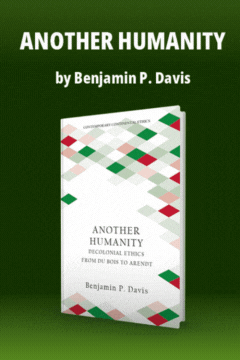How Many Internally Displaced Persons Are There in Darfur?
How Many Internally Displaced Persons Are There in Darfur?
Eric Reeves: How Many Internally Displaced Persons Are There in Darfur?
The simple answer to the question, ?How many internally displaced persons are there in Darfur?? is easy: we don?t know, and we don?t know the margin of error for various figures that have been promulgated by the UN in the past. But we are not without data, and the data raise troubling questions about the integrity of the current UN estimate of 1.9 million IDPs, very quietly first published in July 2010. When precisely this consequential revision?down from a previous UN figure of 2.7 million IDPs?took place is unclear, as is the decision-making process itself. As recently as May 2010, a report from the UN General Assembly?s Economic and Social Council, presumably using UN data, declared that ?more than 2 million people remain displaced.?
The history of the new UN figure provides context that is at once suggestive and disturbing. The three statistical snapshots below all come from the UN Office for the Coordination of Humanitarian Affairs (OCHA); none includes the more than 250,000 Darfuri refugees currently in eastern Chad, according to the UN High Commission for Refugees.
?Darfur Humanitarian Profile No. 25 (representing conditions as of October 1, 2006) listed figure of 2 million IDPs. The graph representing the growth of this figure showed a steady rise from April 2004?a year into the most violent phase of the genocide. Whatever data were justifying the figure from OCHA?and many were from UN World Food Program camp registrations?they were accumulating with considerable regularity and consistency.
?Darfur Humanitarian Profile No. 30 (representing conditions as of January 2008) reported in its overview: ?By 1 January 2008, over 2,420,000 people were internally displaced, while another 1.8 million were seriously affected by the ongoing crisis and considered in need of humanitarian aid.? The accompanying graph continued to suggest slower but still relentless growth in the number of IDPs. Given ongoing village destruction and attacks against civilians, this is what should have been expected.
?Darfur Humanitarian Profile No. 34 (representing conditions as of January 2009) was the last that OCHA produced. Its release in March 2009 came just as Khartoum was expelling thirteen distinguished international humanitarian organizations and closing three important Sudanese relief organizations. This last Profile found that there were ?nearly 2.7 million Internally Displaced Persons in Darfur.? Yet again, the accompanying graph showed a slow but steady increase, much of it clearly the result of massive civilian destruction and attacks in the Muhajeriya area of South Darfur.
In short, through the expulsions of March 2009, OCHA had worked assiduously to gather data it felt established a credible figure for IDPs, and this figure had grown, according to the data used, to 2.7 million people. It is not fully clear why OCHA ceased publishing Darfur Humanitarian Profiles following No. 34. Did it reflect a lack of assessment manpower on the ground (the official UN explanation)? Or was it paralyzing fear before implicit threats of further expulsions and obstruction by the Khartoum regime? The evidence of the past two years strongly suggests the latter explanation.
These data showing a rise in IDPs were featured prominently in news and human rights reporting on Darfur. Both the US Agency for International Development and the Internal Displacement Monitoring Center used the 2.7 million figure. But OCHA issued a massive ?correction? last year, tied to no public or private report. As of July 2010 OCHA referred to 1.9 million IDPs?800,000 people had suddenly become ?undisplaced.? The only ?source? offered by OCHA for this radical downsizing of an intensely distressed population is buried in a terse footnote, referring to work by the intergovernmental International Organization for Migration (IOM): ?IOM Sudan (2009).? There was no indication of precise date, title, researchers, links, or anything that would allow a reader to understand what was signified by this reference.
The IOM did not announce a publication or completed study on displacement in Darfur, and OCHA did not subsequently explain what IOM had uncovered that justified such an enormous decline in the population considered ?displaced.? IOM?s 2009 annual report makes no reference to research on IDPs in Darfur, although the report does note that Khartoum prevented IOM missions from traveling to South Darfur for much of the year. (In summer 2010 Khartoum expelled two senior IOM officials for no reason.)
In the end, glib and misleading sourcing by OCHA was inevitable. The IOM data were incomplete and derived from a work-in-progress, which required a very large degree of conjecture in yielding a figure for internal displacement. (An inquiry I made to OCHA Sudan in March 2011 yielded no useful account of these issues; indeed, there was no mention of a role for IOM in establishing the new figure for IDPs.)
What had happened? Since 2009, many within the humanitarian community in Darfur have thought some recalibration of IDP numbers necessary, for a variety of reasons: double-counting of people registered in two locations; manipulation within the camps of UN World Food Program ration cards; the many deaths (but of course also many births) that had occurred in the camps; and confusion over whether a person already displaced counted for one or two ?IDPs? if displaced a second time.
But the new IOM ?figure? was relevant for the year 2008, not 2010, even less for 2011. Moreover, during the period of study IOM?s database was significantly incomplete. For example, only 488,997 IDPs were registered with IOM in South Darfur, a region with half of Darfur?s total population (6.5 million). Some camps and concentrations of IDPs had never been registered. This was not an issue of bad faith on the part of IOM, which was simply doing the best it could with limited data (including data from the UN World Food Program). For the beginning of 2008, a figure of 1.9 million was at least representative of the data available to IOM. IOM made clear to OCHA that the figure was a work-in-progress with very significant limits; OCHA ignored this and peremptorily reduced the figure on the basis of the ?IOM Sudan (2009)? reference. IOM had no intention of the figure of 1.9 million IDPs replacing earlier assessments, precisely because of the issues that are raised in this analysis.
Prime among these is the conspicuous fact of massive ongoing human displacement throughout Darfur. As noted, the data for displacement do not distinguish between someone displaced for the first time and someone displaced more than once. There has been no rigorous correction to the potential problem of double-counting in these cases?nor, indeed, is such correction currently possible given the extreme duress and insecurity that prevail throughout Darfur.
But we should also bear in mind UN and other figures for total displacement, of all kinds, in the immediately preceding years. OCHA estimated that 300,000 Darfuris were newly displaced in 2007, and 317,000 Darfuris in 2008. In 2009, OCHA published no figure of its own, but the Canadian ?Peace Operations Monitor? found evidence suggesting that ?over 214,000 people were newly displaced [in Darfur] between January and June [2009] alone.? Given the reports of violent displacement that followed June 2009, a total for the year of 250,000 seems conservative. Internal displacement for 2010 is still being calculated, but by the end of November, the Internal Displacement Monitoring Centre had estimated that ?268,000 [Darfuris were] newly displaced.? The OCHA Sudan Bulletin (January 7?13, 2011) reports that the ?overall number of people displaced during the December 2010 fighting in the area of Khor Abeche stands at 43,000.? 300,000 newly displaced for the year again seems a conservative figure. As for this year, there?s no single report on displacement, but the intensified violence and targeted aerial attacks on civilians that began in earnest in November 2010 has continued, producing additional tens of thousands of displaced persons.
The data total for newly displaced persons during this period in the Darfur genocide is thus roughly 1.2 million?900,000 since the beginning of 2008, the moment in which IOM data, whatever their limitations, are most relevant. Again, no effort has been made in these yearly totals to distinguish between those displaced for the first time or the second time?or the third or the fourth time. The number of people displaced for the first time since 2007 may not exceed 1 million?or it may; we simply don?t know. But this massive additional displacement makes conspicuous nonsense of any current use of a figure of 1.9 million total IDPs in Darfur since the beginning of conflict in 2003. Some displaced persons have been able to return, but they are barely a trickle from the vast populations housed in increasingly desperate and vulnerable camps. Returns have done almost nothing to change the overall number of displaced, whatever it is.
Who is responsible for deciding that this low figure of 1.9 million IDPs should be promulgated? How could that decision have been made without addressing the issue of displacements since 2008?
Georg Charpentier, now the chief representative of OCHA in Sudan, has distinguished himself on a number of occasions: for withholding data and reports on malnutrition; for allowing his press releases on humanitarian conditions to be vetted by the regime in Khartoum; for silencing his subordinates who wish to speak to news agencies; and for his capacity for outright mendacity. Charpentier falsely and knowingly stated earlier this year that ?UN humanitarian agencies are not confronted by pressure or interference from the Government of Sudan.?
Is Georg Charpentier really the man the world community wants making decisions about what the data for human displacement in Darfur show? Certainly OCHA is following his lead, and because of OCHA journalists increasingly cite not the previous figure of 2.7 million IDPs but the clearly untenable figure of 1.9 million. So, too, with USAID.
As humanitarian assessment capacity withers in Darfur, and as we approach a new ?hunger season? that again threatens millions with food shortages, this is not an unimportant question in determining overall needs. Darfuris, as represented in dispatches from Radio Dabanga?based on interviews with actual IDPs, not statistical contrivance?are suffering terribly. As the reports quoted below show, their voices resound with great desperation. In the absence of a more robust humanitarian response?which will require not only greater honesty from OCHA but much more determination on the part of the UN/AU peacekeeping force and its international backers?these voices may soon be silenced. Not only by statistical elision, but by conditions for displaced persons that have grown intolerable in too many places.
From Radio Dabanga:
?Kalma, Tawila camps in Darfur suffer water shortage, difficulties?
Displaced people in Kalma camp in South Darfur and Dali camp in Tawila, North Darfur, complained of severe shortage in drinking water and relief aid and terrible health services in the two camps. Additionally, miscarriages are common because pregnant women have to walk long distances and spend a long time waiting at the water pump to get water. (April 21, 2011)
?Spread of disease in Zamzam camp, 2 children die?
The IDPs in Zamzam camp face harsh health and living conditions. One displaced person told Radio Dabanga that the mortality rate is increasing and that diarrhea, infections, coughs, and skin diseases have started to spread widely between the refugees, especially among children, elderly people, and pregnant mothers. He added that security authorities continue to prevent the medical team of entering the camp, for the third week in a row. (April 6, 2011)
?Displaced in Mornei complain of lack of aid for 3 months?
Displaced people in Mornei and Ronga Tas camps are suffering from lack of food for the past three month. According to the Zalingei camps coordinator, differences have risen between the sheikhs of the camp and the World Food Program about the census of new live births and deaths in the camp. This has led the WFP to stop distributing aid. (April 15, 2011)
?Prices of goods in Darfur rise?
There has been an increase in the price of goods and food items in Darfur. The inflation is attributed by IDPs to the reduction of services and rations provided in the camps. IDPs in the Bir Dagag and Kandibi camps in West Darfur reported that price of food has gone higher and the services offered to the people has been reduced. Speaking to Radio Dabanga from the camps, sources said the people there have spent three months without any food and received no assistance during the last six months. One of them described the situation as terrible. (March 18, 2011)
?Health and water problems at Zamzam, Abu Shouk Camps, Darfur?
The newly displaced from Jebel East and Shangil Tobaya at Zamzam Camp face a deteriorating situation with regard to health and food. There is also an outbreak of diseases. One of the new refugees informed Radio Dabanga that more than 12 children under the age of ten years old died from diarrhea and intestinal problems [period in question unclear], adding that the majority of newly displaced are living under the open sky without food or shelter. The source noted the deteriorating environment of the camp, the high temperatures and the crowding of the newly displaced people in one place. The Zamzam hospital he described as crowded with patients?the infirm, the elderly and children. On the other hand, the IDPs at Abu Shouk Camp complained of an acute shortage of drinking water and lack of health services. (March 7, 2011)






